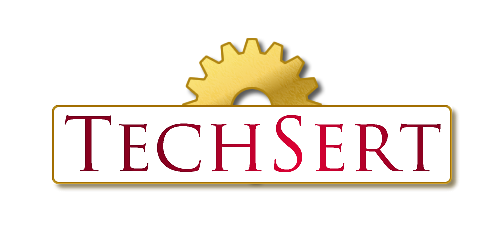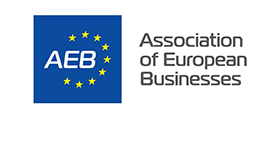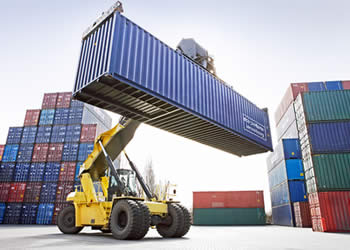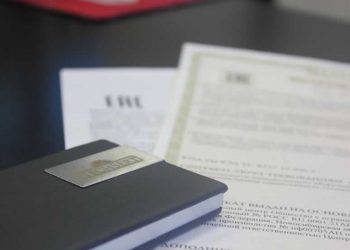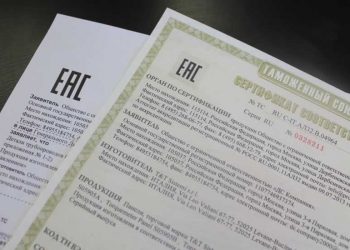EAC Declaration of conformity
EAC Declaration – last update 15.04.2016

The EAC Declaration of conformity for the Customs Union EAC is one of two new EAC Certifications documents introduced with the reform of technical regulations (TR CU) in Russia, Belarus and Kazakhstan. The latter being the EAC Certificate for the Custom Union EurAsEC.
The first, predominant difference compared to the GOST R Certifications is the validity extended to the three member countries of the Eurasian Customs Union: Russia, Belarus and Kazakhstan. Shortly to be extended to Armenia, Tajikistan and Kyrgyzstan.
The new rules have not entered into force simultaneously for all sectors of production, the legislation EAC in fact was scheduled in a three years time frame. The schedule is reported in the page devoted to the EAC regulations agenda.
In practice, for the EAC Declaration applicant, several differences are to be taken into consideration if compared with the issuance of a Certificate GOST R, a Declaration GOST R or a Certificate issued according technical regulations Gost TR.
New legislation on the EAC Declaration applicant
 A significant difference for foreign manufacturers, is the need to be supported in the request of the Declaration of conformity EAC, by a representative established in the territory of the Eurasian Customs Union. This means that it is not possible for a manufacturer, not registered in one of the countries of the Customs Union, to attain the Declaration of conformity EAC independently. The applicant may either be a subsidiary of the producer on the territory of the Custom Union EAC, an importer, a distributor or a company that provides representation services for certification purposes. The name of the representative is therefore on the Declaration of conformity and it is entitled to use the document at will, including to authorize its use by other entities, including the manufacturer, through a provided proxy.
A significant difference for foreign manufacturers, is the need to be supported in the request of the Declaration of conformity EAC, by a representative established in the territory of the Eurasian Customs Union. This means that it is not possible for a manufacturer, not registered in one of the countries of the Customs Union, to attain the Declaration of conformity EAC independently. The applicant may either be a subsidiary of the producer on the territory of the Custom Union EAC, an importer, a distributor or a company that provides representation services for certification purposes. The name of the representative is therefore on the Declaration of conformity and it is entitled to use the document at will, including to authorize its use by other entities, including the manufacturer, through a provided proxy.
The most important differences with regard to the issuance process of the document are
concentrated undoubtedly in the verification procedure, which requires in some cases (depending on the type of product, the possibility to be easily transported and the validity of the declaration required) either inspection and testing of the product at the production facility or shipment of samples to the laboratory. Finally the assessment procedure is combined and sometime substituted by an analysis documents.
Ask for an offer or more information!
Necessary documentation to be provided in order to attain a Declaration of conformity EAC
The procedure for the issuance of the EAC Declaration of conformity results in a minimum schedule of 2 daysdepending on the technical regulations required to be issued according to, the completeness of the documentation provided and the level of cooperation from the representative company.
The EAC Declaration is delivered on simple paper, with the EAC marking logo, and generally a copy must be attached to the documents file required for customs clearance in Russia, Belarus and Kazakhstan, as well as being shown in original or in copy to the competent authorities in case of an explicit request.
The use of EAC Declaration of conformity is not limited, according to regulation, to business transactions with the representative, but it might be use for all transactions under the provision of the applicant’s proxy.
The Declaration of conformity EAC reports various information including: the manufacturer’s name, the name of the applicant which as mentioned has to be established in the territory of the Eurasian Customs, the name of the certification body that issued the document, the name of product or products and its customs Code, the rules to which the document refers, and finally the duration of the declaration of conformity, which can not exceed 5 years.
The EAC declarations, once issued, can be found on the site of the Federal Agency RusAccreditation .
Documents for the estimation:
Customs Code
Description of the product in Russian language
Drawings
Ingredients in the case of foods
Features of the operational facility
In order to issue the Declaration of conformity, in addition to the documents required for the estimate:
Sale agreement or proxy that connecting producer and representative
Founding act of the representative company
Any foreign certificates
Name of the producer
Certification request (provided by the certification body)
Operational documents: technical passport, user’s manual
ISO processes
Technical features
Test protocol from the manufacturer
Certificates of compliance for materials and components
Certificates of conformity for the product
Other documents, which confirm directly or indirectly that the products conform to the safety requirements of technical regulations:
Photos
Drawings / diagrams














